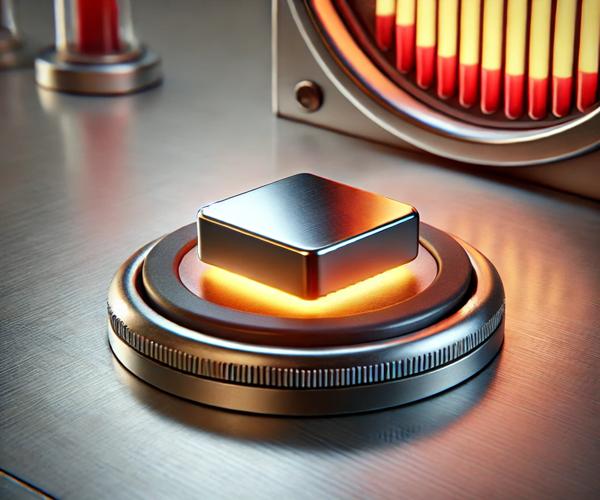
Temperature changes can significantly affect the performance of neodymium (NdFeB) magnets. Here are some key aspects of how temperature influences their performance:
Reduction in Magnetic Strength: Neodymium magnets have a specific temperature threshold known as the Curie temperature, which is typically around 310°C to 400°C depending on the specific alloy. Above this temperature, the magnet’s internal structure changes, leading to a permanent loss of magnetism.Below the Curie temperature, neodymium magnets exhibit a decrease in magnetic strength as the temperature increases. This is due to the increased thermal motion of the atoms within the material, which interferes with the alignment of the magnetic moments, weakening the magnet.
Thermal Demagnetization:Neodymium magnets lose their magnetization when exposed to high temperatures over time. The demagnetization rate increases with temperature, meaning the magnet becomes less effective as it heats up. This is especially critical for applications that require stable magnetic properties over a range of temperatures.
Low-Temperature Effects:Neodymium magnets are typically stable at low temperatures, but if exposed to extremely cold environments (below -100°C), the material may experience increased brittleness, making the magnet more prone to cracking or chipping.Low temperatures can also increase the magnetization in some cases, but this effect is typically less pronounced than the demagnetization caused by high temperatures. Ferrite magnets are generally more resistant to extreme temperatures and can maintain their magnetic properties at lower temperatures, though they may become more brittle under extremely cold conditions.
Thermal Expansion: As temperature increases, neodymium magnets undergo thermal expansion. This can affect the dimensions of the magnet, potentially causing mechanical stresses if the magnet is housed within a rigid structure. In some cases, the expansion can also lead to a change in the magnetic field distribution. For bonded neodymium magnets, which are composed of neodymium powder mixed with a polymer binder, the effect of thermal expansion can be more pronounced.
Magnet Coatings:Neodymium magnets are usually coated (with materials such as nickel, epoxy, or zinc) to prevent corrosion, especially in humid or outdoor environments. The performance of these coatings can be affected by temperature, and high temperatures can cause them to degrade, exposing the magnet itself to oxidation and performance loss.